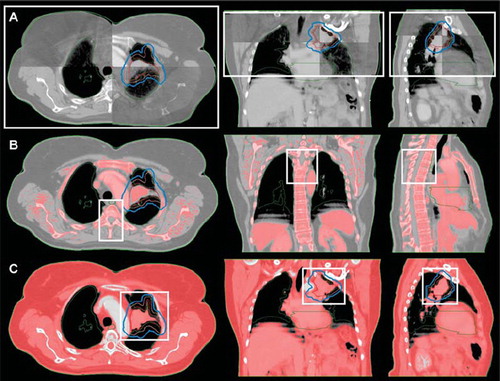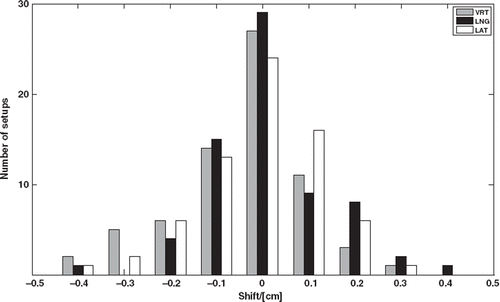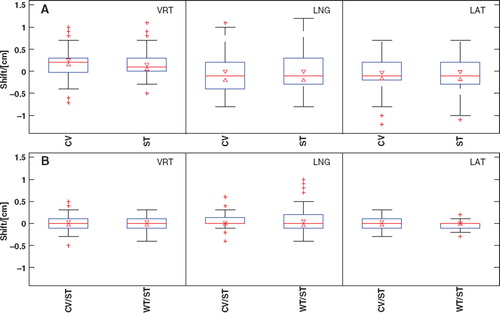Figures & data
Table I. Characteristics of the UnTagged and the CBCT image sets.
Figure 1. A user-defined 3D rectangular ROI (white box) when performing a WT (A), CV (B) and ST (C) CBCT match. (A) The cranio-caudal (CC) borders of the ROI were limited by the length of the CBCT scan. The left-right (LR), and the anterior-posterior (AP) borders were positioned just outside the thorax volume to assure whole thorax volume inclusion in the ROI. (B) The CC borders of the ROI were limited by the extent of the PTV (blue line). The LR, and the AP borders were positioned just outside the columna vertebralis when using bone window level in Offline Review. The volume within the ROI utilized for the CV match is colored red (i.e. the pixels with an intensity range of 50–3000 HU). (C) The CC borders of the ROI were limited by the extent of the PTV. The LR, and the AP borders were positioned next to the PTV. The volume within the ROI utilized for the ST match is colored red (i.e. the pixels with an intensity range of -150-150 HU) (Color version of figure is available online.)

Figure 2. Translational shifts (VRT, LNG and LAT) between the 3 DOF CV match and the 2D kV planar imaging match on CV.

Figure 3. Rotations (Pitch, Roll and Yaw) for the 6 DOF CV, WT and ST matches. On each box, the central mark is the median, the edges of the box are the 25th and 75th percentiles, the whiskers corresponds to approximately ± 2.7 SD, outliers are plotted as red crosses individually, the notches corresponds to the confidence interval of the median. If the notches do not overlap for the various group data it can be concluded, with 95% confidence, that the true medians differ.

Figure 4. (A) Translational shifts (VRT, LNG and LAT) between the non-IGRT setup and the 6 DOF CV and ST matches. (B) Translational shifts for the 3/6 DOF CV/ST, as well as the WT/ST matches.

Table II. Summary of the calculated CTV to PTV margins.